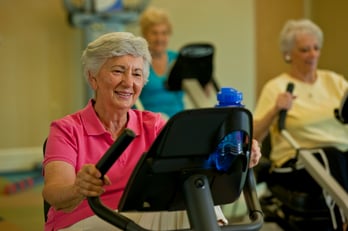 Community wellness programming is one of the most important ways to keep your residents engaged. As wellness professionals, it’s our job to make sure that the programs being put into play are impactful and enjoyable, and continue to set precedents and work on the varying dimensions of wellness.
Community wellness programming is one of the most important ways to keep your residents engaged. As wellness professionals, it’s our job to make sure that the programs being put into play are impactful and enjoyable, and continue to set precedents and work on the varying dimensions of wellness.
ZOOM: Get a New Perspective on Wellness
Have you heard of the book Zoom? It’s a children’s book by Istvan Banyai. Each page zooms out a little bit farther until you see the bigger picture. Sometimes, as wellness leaders, we tend to forget to “zoom out” and look at what’s working and what isn’t.
When looking at the bigger picture, try to take in all of the offerings at the community. What is working? What isn’t working? What programs need to be revamped or even tossed out? How is your community keeping up with fitness and wellness trends in order to stand out among the rest?
Collecting and Analyzing Data
Most communities have a way of collecting attendance data and feedback from residents. If this isn't happening at your community, consider it to be of utmost importance in order to provide quality programming and understand how residents react to evolving programming.
For communities that do not have data collection in place, consider looking at this blog post by Emily Davenport, NIFS Director of Fitness Management and Active Aging Services, to help you understand how to get started. Once you have a clean, simple way of collecting resident data, it will eliminate a lot of stress.
For communities that do have this in place, look through the data to see what is trending at the community and what isn’t. What trends are you seeing? Are you noticing an influx of residents committing to a program for a couple of months and then falling off the wagon? Are you seeing numbers holding steady and noticing a positive benefit from certain programs that are worth keeping the same? Being able to tap into this data collection is key when deciding what works for the community and what needs to be improved upon.
To Keep or Not to Keep?
Taking an in-depth look into offerings is also a great way to understand whether something needs to be let go. A great way to do this is to look at comparative data over the months/years and start asking questions. If you notice that a program or offering fluctuates in attendance, you may want to consider revamping the offering in a new and exciting way. Maybe the program went from being well-attended to never attended. If that’s the case, you probably would be better off taking away that program and adding something else, or recreating a different offering to increase attendance.
Always Leave Them Wanting MORE
When resident attendance starts to increase, keep in mind that your programs need to evolve. This doesn’t mean that you need to constantly reinvent the wheel, but it does mean that you should continually add different aspects to your programs. If we lack evolution of our offerings, our communities start to get stagnant and too comfortable. Including new and innovative ways to get our community members involved is a key piece when standing out as wellness professionals.
The reason most of us have become wellness professionals is to impact the well-being and improve the quality of life for our residents, patients, or team members. It’s our duty to continually provide engaging, fun, and interactive ways for our community members to learn, grow, and live out their lives in a positive way.


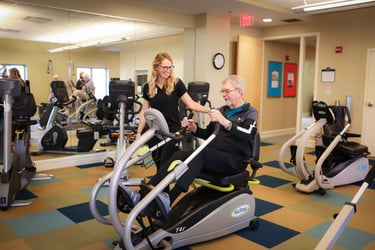 Our fitness management staff members have some of the best stories around on the impact their fitness programs are having on resident lives in the senior living communities we serve. They hear comments from residents or their family members, they see new faces in classes, and they track the data in programs and services that demonstrate solid engagement. Our staff takes great pride in these affirmations knowing that the work they are so passionately committed to is truly making a difference not just for residents but also for the culture of a community as a whole.
Our fitness management staff members have some of the best stories around on the impact their fitness programs are having on resident lives in the senior living communities we serve. They hear comments from residents or their family members, they see new faces in classes, and they track the data in programs and services that demonstrate solid engagement. Our staff takes great pride in these affirmations knowing that the work they are so passionately committed to is truly making a difference not just for residents but also for the culture of a community as a whole.
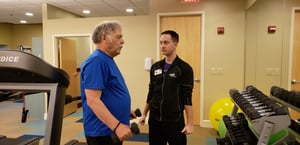 From group fitness instructors, to personal trainers, to fitness managers, finding the right people is at the heart of what we do, and our interview and vetting process helps us find the best of the best. If you are looking for support in recognizing fitness qualifications and making the right hire for your community, NIFS can lead your interview process. We can also aid in the training process once you make your hire to get your new team member on the right path and connected to NIFS resources and programming materials.
From group fitness instructors, to personal trainers, to fitness managers, finding the right people is at the heart of what we do, and our interview and vetting process helps us find the best of the best. If you are looking for support in recognizing fitness qualifications and making the right hire for your community, NIFS can lead your interview process. We can also aid in the training process once you make your hire to get your new team member on the right path and connected to NIFS resources and programming materials.


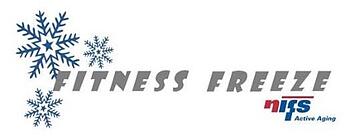 In part 1
In part 1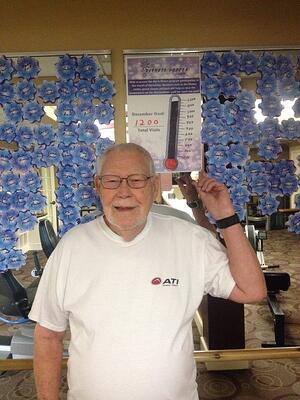
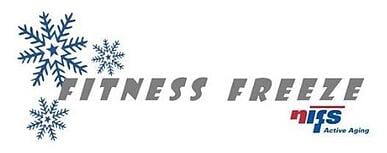
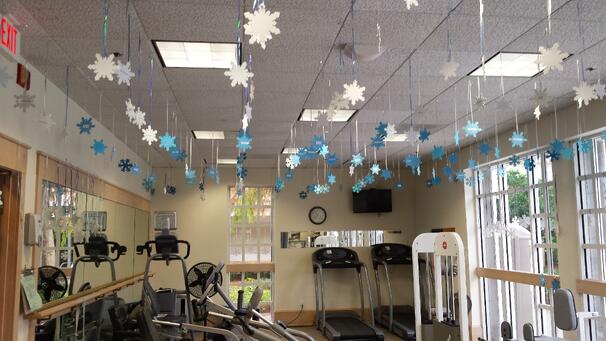
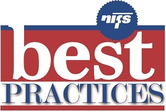


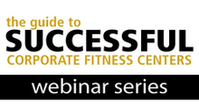
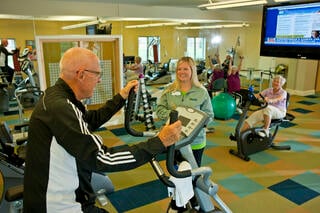 You're senior living community is missing out on some important benefits if you don't have detailed data from your fitness program. Read on to find out what you stand to gain by getting smarter about gathering and using data from resident participation in the fitness center and group exercise classes as well as evaluating resident participation in fitness center appointments and services.
You're senior living community is missing out on some important benefits if you don't have detailed data from your fitness program. Read on to find out what you stand to gain by getting smarter about gathering and using data from resident participation in the fitness center and group exercise classes as well as evaluating resident participation in fitness center appointments and services.